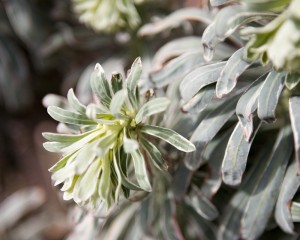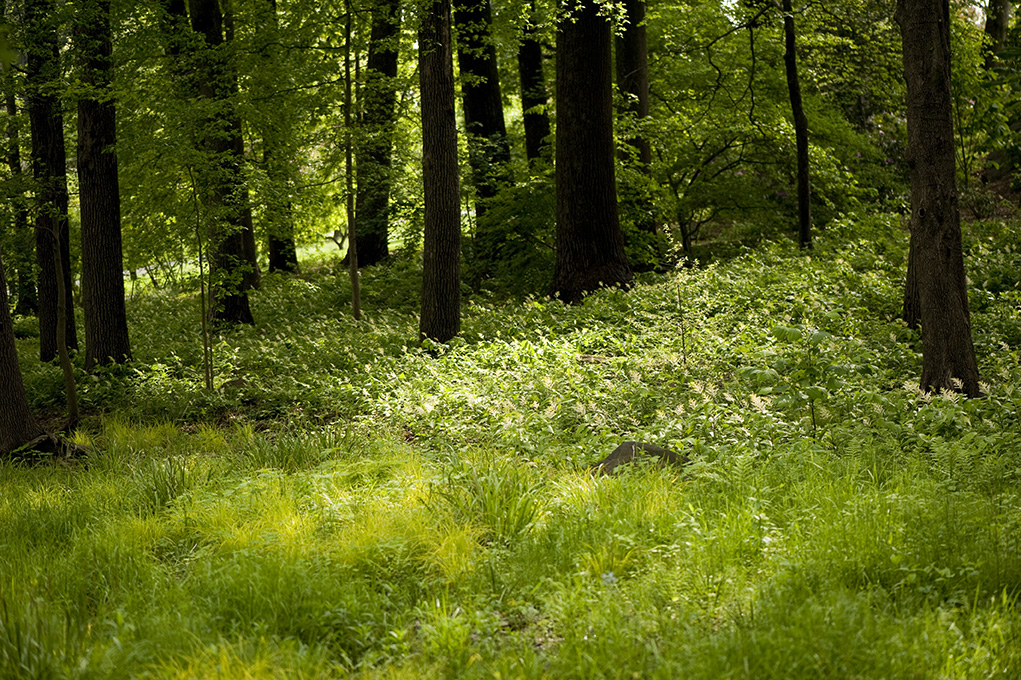Morning Eye Candy: Korea in Pink
Posted in Around the Garden, Photography on March 27 2012, by Matt Newman
Korean rhododendron (Rhododendron mucronulatum) — Photo by Ivo M. Vermeulen

Inside The New York Botanical Garden
Posted in Around the Garden, Photography on March 27 2012, by Matt Newman
Korean rhododendron (Rhododendron mucronulatum) — Photo by Ivo M. Vermeulen
Posted in What's Beautiful Now on January 13 2012, by Matt Newman

Gloves, hat, scarf–I brought none of these things when I went wandering the Garden during lunch yesterday. The climate was just so perfectly suited to a stroll. And the greatest benefit of working at the NYBG is that–no matter the climate–there’s something out on the grounds worth visiting. It’s true there’s no luck of a permanent spring with buds and blooms sprouting up from corner to corner, but winter has its own subtle and touching charm.
This season’s odd patterns of sun and darkness make for confusing daytime walkabouts; I hadn’t expected to step out of the office at 3 p.m. only to find dusk creeping along at the edges of the afternoon. Adjusting to this kind of Norse winter is a slow process. (Being a southerner, anything north of Georgia is practically Norway to me.) But I decided that I was already out and about, and despite the settling dark I was going to soak up as much enjoyment as I could from the remains of the day.
Posted in Photography on October 20 2011, by Ann Rafalko
Remember how we promised you, way back in April, that the Azalea Garden is still beautiful in fall? Here’s proof!

Rhododendron ‘Autumn Belle’ in the Azalea Garden (photo by Ivo M. Vermeulen)
Posted in Photography on June 21 2011, by Ann Rafalko
Who says azalea gardens are only for spring? Not us. Our new Azalea Garden is beautiful 365-days a year. See for yourself!
Azalea Garden panorama (click to enlarge) – Photo by Ivo M. Vermeulen
Posted in Photography on June 17 2011, by Ann Rafalko
In the Azalea Garden
Wamsler Rock
Daffodil Hill
Photos by Ivo M. Vermeulen
Posted in Gardening Tips on June 2 2011, by Sonia Uyterhoeven

As you stroll through the Azalea Garden you will see a large number of North American native species and their closely related Asian cousins. Many of these plants share a genus, but have different species names. For example, the garden contains many interesting Asian Arisaema commonly known as Jack-in-the-pulpits.
In botanical nomenclature, plants are identified by a two-part, or binomial, name. A plant’s genus denotes that it belongs to one group, while the species name marks it as a member of a sub-group of the genus. There are many Arisaema in the world, yet Arisaema triphyllum refers solely to a specific Jack-in-the-pulpit, one of North America’s native Arisaema.
Why are there so many closely related species on two continents separated by a large ocean? Many of these Asian/North American counterparts come from a common genetic pool. It is possible to imagine that over time seeds have been dispersed by glaciers, wind, birds, or other animals. While this certainly has occurred it would be more likely to have happened on a contiguous landmass.
The most compelling theory for why these closely related floras are found on the opposite sides of an ocean comes from the scientific theory of continental drift, the process by which the continents have moved apart over millions of years. About 250 million to 65 million years ago, during the Mesozoic era, the landmass Pangaea began to split apart; the northern part of the supercontinent broke off into Laurasia (North America and Eurasia). As Asia and North America drifted away from each other, the plants that had been one genus began to evolve. Time, combined with changes in climate, and range fragmentation helped these once related plants to diversify and evolve into new species. Why are there so many Asian Arisaema compared with only two Arisaema native to North America? During the last ice age, parts of eastern Asia remained ice-free. This resulted in a greater diversity in the flora there.
How do botanists know that these plants are closely related? Just looking at the plants can be deceptive, so they also collect evidence from the fossil record and analyze the plants’ genes in order to determine relationships.
In this video Kristen Schleiter, Curator of Outdoor Gardens and Woody Plants, discusses many of the Azalea Garden’s geographically diverse perennials.
Here's a closer look at some of the plants in the Azalea Garden.
Posted in Photography on May 28 2011, by Ann Rafalko

Rhododendron ‘Hinomayo’ (photo by Ivo M. Vermeulen)
Posted in Photography on May 24 2011, by Ann Rafalko
The new Azalea Garden is about so much more than azaleas. The garden is a sun-dappled Eden; the perfect place to sit and enjoy the warmth of summer.

In the Azalea Garden (photo by Ivo M. Vermeulen)
Posted in Photography on May 14 2011, by Ann Rafalko
These colors are entirely real.

Rhododendron ‘Hinomayo’ in the Azalea Garden (photos by Ivo M. Vermeulen)
Posted in Around the Garden on May 5 2011, by Ann Rafalko
 There are many things we cannot predict in life, chief amongst them: The weather. And while the forecast for this weekend is looking a little gray, maybe we can all just use the drizzly weather as opportunity to tell mom, “You are my sunshine!” (come on, you know she sang that to you when you were little), while feting her over a delicious picnic amid the insanely gorgeous new Azalea Garden.
There are many things we cannot predict in life, chief amongst them: The weather. And while the forecast for this weekend is looking a little gray, maybe we can all just use the drizzly weather as opportunity to tell mom, “You are my sunshine!” (come on, you know she sang that to you when you were little), while feting her over a delicious picnic amid the insanely gorgeous new Azalea Garden.
Call us hopeless optimists, but the weatherman does seem to be wrong more often than right. So don’t let the threat of a little rain scare you away. This weekend’s Garden Parties will go on, rain or shine. Picnics will be under the Picnic Pavilions. Activities will take place under a tent in the Children’s Adventure Garden. And the soft, gray tones will just make the unbelievable colors of the new Azalea Garden that much more spectacular! So come celebrate with us, and let your mother be the one who shines!